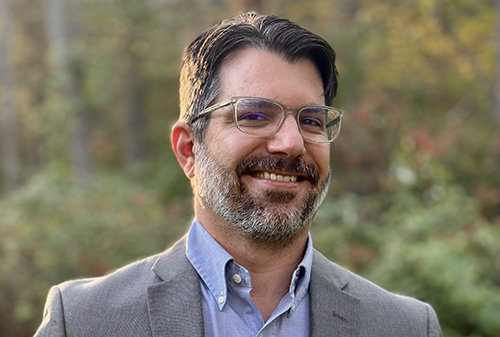Get our email updates
Stay up-to-date on the companies, people and issues that impact businesses in Syracuse, Central New York and beyond.
What's New
Upcoming Events
CNYBJ Job Board

AmeriCU, Mountain Valley FCU merger expected to get state approval by year’s end
ROME, N.Y. — The New York State Department of Financial Services is expected to issue a final approval of the proposed merger between credit unions in the Mohawk Valley and the North Country by the end of the year. The members of Mountain Valley Federal Credit Union in the northeastern part of New York have […]
Get Instant Access to This Article
Become a Central New York Business Journal subscriber and get immediate access to all of our subscriber-only content and much more.
- Critical Central New York business news and analysis updated daily.
- Immediate access to all subscriber-only content on our website.
- Get a year’s worth of the Print Edition of The Central New York Business Journal.
- Special Feature Publications such as the Book of Lists and Revitalize Greater Binghamton, Mohawk Valley, and Syracuse Magazines
Click here to purchase a paywall bypass link for this article.
ROME, N.Y. — The New York State Department of Financial Services is expected to issue a final approval of the proposed merger between credit unions in the Mohawk Valley and the North Country by the end of the year.
The members of Mountain Valley Federal Credit Union in the northeastern part of New York have voted to merge their credit union with AmeriCU Credit Union, which is headquartered in Rome.
Mountain Valley Federal Credit Union is based in Peru in Clinton County, south of Plattsburgh. Mountain Valley members voted by mail and in-person at a special membership meeting on Sept. 18.
The proposed merger will enable the nonprofit Upstate New York credit unions to expand access to services, expertise, and branch locations for members and businesses across the Northern and Central New York regions, per AmeriCU’s Sept. 22 announcement.
The merger has also been approved by the National Credit Union Administration (NCUA), the federal agency that regulates federal credit unions.
AmeriCU has been serving members who live or work in Clinton and Essex counties for a number of years. The expanded AmeriCU credit union will serve more than 180,000 members across 24 counties, with 25 locations and combined assets of $2.8 billion, the Rome–based credit union said.
Mountain Valley’s four branch locations — all in Clinton and Essex counties — will become AmeriCU branches and make up AmeriCU’s Mountain Valley Region. All Mountain Valley employees have been offered the chance to continue working for the combined organization.
Ron Belle, president and CEO of AmeriCU Credit Union, will continue in that role in the combined organization. Mountain Valley CEO Maggie Pope will become assistant VP for community engagement in AmeriCU’s newly developed Mountain Valley Region. Pope is a well-known and highly regarded business leader in Clinton and Essex Counties, AmeriCU noted in its announcement.
Mountain Valley FCU initiated the merger and its board of directors unanimously approved it earlier this year, “citing the many similarities in the organizations’ origins, foundational values, commitment to member satisfaction, and community involvement.”
“My dad would be so proud,” said Kathleen Roach, president of Mountain Valley board of directors, whose late father, John Roach, founded the credit union in 1963.
John Roach was a teacher in the Peru Central School District, per the AmeriCU announcement.

AmeriCU appoints senior VP of marketing
ROME, N.Y. — AmeriCU Credit Union recently announced it has hired Amber Cooleen as its new senior VP of marketing. She recently spent four years serving as chief marketing officer for a credit union based in the Capital Region. Throughout her career, Cooleen has held key marketing roles across various industries, from business-to-business startups to
Get Instant Access to This Article
Become a Central New York Business Journal subscriber and get immediate access to all of our subscriber-only content and much more.
- Critical Central New York business news and analysis updated daily.
- Immediate access to all subscriber-only content on our website.
- Get a year’s worth of the Print Edition of The Central New York Business Journal.
- Special Feature Publications such as the Book of Lists and Revitalize Greater Binghamton, Mohawk Valley, and Syracuse Magazines
Click here to purchase a paywall bypass link for this article.
ROME, N.Y. — AmeriCU Credit Union recently announced it has hired Amber Cooleen as its new senior VP of marketing.
She recently spent four years serving as chief marketing officer for a credit union based in the Capital Region. Throughout her career, Cooleen has held key marketing roles across various industries, from business-to-business startups to global real-estate organizations.
With more than 20 years of experience, Cooleen “brings innovation, creativity, and a proven record of leadership to help support AmeriCU’s growth,” the credit union contended in its Aug. 25 announcement.
Cooleen indicated that her focus will be on strengthening the credit union’s connection with its members, reinforcing that members can count on AmeriCU.
“Our members are at the center of everything we do, and it’s critical that we connect with them in a meaningful, impactful manner,” Cooleen said in the announcement. “Our members have many choices for where they open a checking account, get a car loan, or apply for a mortgage. What sets us apart is the relationships we have with them — we aren’t just a credit union, we are a trusted financial partner.”
Cooleen holds a bachelor’s degree in English with a concentration in writing, along with a master’s degree in corporate and organizational communications from Fairleigh Dickinson University in New Jersey.
Beyond her professional accomplishments, Cooleen has volunteered with organizations such as Catherine’s Center for Children and the Red Cross of Northeastern NY, where she served three years on the board of directors. She has also volunteered as a judge for the America’s Credit Unions’ Diamond Awards, an annual credit union marketing competition.
The nonprofit AmeriCU Credit Union is a member-owned, financial institution with total assets of $2.8 billion and more than 170,000 members in New York state and beyond.

New Visions FCU chief HR officer wants to listen and learn
ENDWELL, N.Y. — Visions Federal Credit Union (FCU) has a new VP/chief human resources officer (CHRO), who started her new duties back in the summer. For Aoife Quinn, the priority early on has been to listen and learn. “After getting a sense of who we are, where we are, and where we want to be,
Get Instant Access to This Article
Become a Central New York Business Journal subscriber and get immediate access to all of our subscriber-only content and much more.
- Critical Central New York business news and analysis updated daily.
- Immediate access to all subscriber-only content on our website.
- Get a year’s worth of the Print Edition of The Central New York Business Journal.
- Special Feature Publications such as the Book of Lists and Revitalize Greater Binghamton, Mohawk Valley, and Syracuse Magazines
Click here to purchase a paywall bypass link for this article.
ENDWELL, N.Y. — Visions Federal Credit Union (FCU) has a new VP/chief human resources officer (CHRO), who started her new duties back in the summer.
For Aoife Quinn, the priority early on has been to listen and learn.
“After getting a sense of who we are, where we are, and where we want to be, my focus will be translating those insights into clear priorities that strengthen our culture, deepen employee engagement, and reinforce the trust our employees and members place in us,” Quinn said. “We’re building alignment and momentum for the future — ensuring that our people strategy is a lever for growth, impact, and long-term value.”
Quinn comes to Visions FCU with 30 years of experience in human resources (HR), per the Sept. 9 announcement. She also has experience in change management, workplace culture transformation, and executive leadership coaching with corporate clients, and global, multicultural SaaS (software as a service) enterprises for more than a decade.
Prior to joining Visions FCU, Quinn worked as VP/people & culture, head of global human resources at Utopus Insights, which is based in Valhalla in Westchester County. In that role, she led all HR activity for the renewable-energy analytics organization across 10 countries.
In three years, Quinn implemented HR strategies that drove engagement and recruitment, reduced turnover, and supported a positive workplace culture. During that time, she also provided her leadership in change management as Utopus Insights was acquired by and integrated into Vestas Wind Technologies, Visions FCU said.
“I’ve consistently been drawn to organizations, like Visions, that prioritize the employee experience,” Quinn said. “I’m driven by the opportunity to shape an inclusive workplace culture where everyone has a chance to thrive.”
Visions FCU’s workforce includes more than 900 full-time employees across its three-state footprint in New York, New Jersey, and Pennsylvania. In addition to providing financial services, the credit union emphasizes “people helping people” and includes service and community as two of its corporate values, the credit union noted.
Visions FCU went on to say that Quinn has already noticed how these values “resonate among the workforce.”
“I’ve already met so many individuals who are not only deeply passionate about their work but also kind, intellectually curious, and engaged in the world beyond their day-to-day roles,” she said.
Established in 1966, the nonprofit Visions Federal Credit Union serves more than 250,000 members in communities throughout New York, New Jersey, and Pennsylvania. Services include banking as well as auto, home, personal, and business loans.

CNY banking leader sees solid area business conditions, outlook
Region is buoyed by Micron project SYRACUSE, N.Y. — Even as stock markets continue to make all-time highs, there has been a lot of chatter about national economic uncertainty this year with slowing job growth and concern about the potential impact of tariffs, continued inflation, and most recently the federal-government shutdown. But current conditions and
Get Instant Access to This Article
Become a Central New York Business Journal subscriber and get immediate access to all of our subscriber-only content and much more.
- Critical Central New York business news and analysis updated daily.
- Immediate access to all subscriber-only content on our website.
- Get a year’s worth of the Print Edition of The Central New York Business Journal.
- Special Feature Publications such as the Book of Lists and Revitalize Greater Binghamton, Mohawk Valley, and Syracuse Magazines
Click here to purchase a paywall bypass link for this article.
Region is buoyed by Micron project
SYRACUSE, N.Y. — Even as stock markets continue to make all-time highs, there has been a lot of chatter about national economic uncertainty this year with slowing job growth and concern about the potential impact of tariffs, continued inflation, and most recently the federal-government shutdown.
But current conditions and the outlook for the Central New York economy and business climate are not really showing those problems, says one local banking expert.
“I’ll be honest there hasn’t been much shift. We’re not really seeing much negativity,” says Lindsay Weichert, Community Bank, N.A.’s regional president for the Central New York market. “Margins are really holding up. Revenues and sales are holding up well, pretty much across our book of clients.”
Weichert spoke with CNYBJ on Oct. 16. In her position, she is responsible for leading Community Bank’s business development and community-engagement activities while ensuring effective communication across all bank and non-bank lines of business in the Central New York region.
Weichert says tariffs have not yet created many impacts for her bank’s clients, inflation has steadied some, and interest rates have ticked down in recent months.
“We’re still seeing kind of just the normal business cycle. It’s end of year; folks are evaluating equipment purchases. [Clients] still seem kind of unphased by the economy. So we’re not really seeing any pullbacks, anything like that,” she says.
One indicator Weichert looks at to gauge how businesses are doing, is their credit-line usage.
“You expect that if there is broad concern with the economy, they may borrow, throw some cash into an account, and sort of sit tight,” she explains. The bank is not seeing that. Credit-line usage is “totally within a normal range. It’s actually down a little bit from a couple months back,” Weichert notes.
The Micron effect
“It’s really kind of business as usual. And I think we do have a pretty significant advantage here in Syracuse relative to some of the rest of the country with Micron,” Weichert says, referring to Micron Technology’s (NASDAQ: MU) project to build a massive semiconductor campus at the White Pines Commerce Park in the town of Clay. “That provides some pretty good certainty… it’s pretty nice to know that by the end of next year we’ll have 5,000 construction workers on site.”
Even before that, the stage is being set within the community.
“We’re really starting to build out a talent pipeline …you can see it in the higher education space between OCC, Syracuse University, CenterState CEO, all these different folks, MACNY, kind of gearing up to really focus on the apprenticeship program and build on the talent pipeline,” says Weichert. “That sort of feeds on itself and attracts more folks into our market. And then just the multiplier effect. You get 5,000 people as an influx into the community, there is no way they’re not spending a couple bucks while they’re here.”
Micron says it expects to create 9,000 jobs directly over the next 20 years or so.
“But then that multiplier effect is like 5 or 6 [times that] for all the ancillary businesses. So, all those folks are renting and purchasing homes. And going out and patronizing the restaurants, and so on and so forth,” says Weichert.
That helps provide a foundation that there is going to be a certain amount of economic growth going forward in our area and helps allay some concerns about the variability of the broader national and global economy.

Five Star Bank parent reports Q3 net income jumped 52 percent
WARSAW, N.Y. — Financial Institutions, Inc. (NASDAQ: FISI), parent company of Five Star Bank, recently reported net income of nearly $20.5 million in the third quarter of this year, up 52 percent from almost $13.5 million in the third quarter of 2024. The company, in its Oct. 23 earnings report, cited strong performance in each
Get Instant Access to This Article
Become a Central New York Business Journal subscriber and get immediate access to all of our subscriber-only content and much more.
- Critical Central New York business news and analysis updated daily.
- Immediate access to all subscriber-only content on our website.
- Get a year’s worth of the Print Edition of The Central New York Business Journal.
- Special Feature Publications such as the Book of Lists and Revitalize Greater Binghamton, Mohawk Valley, and Syracuse Magazines
Click here to purchase a paywall bypass link for this article.
WARSAW, N.Y. — Financial Institutions, Inc. (NASDAQ: FISI), parent company of Five Star Bank, recently reported net income of nearly $20.5 million in the third quarter of this year, up 52 percent from almost $13.5 million in the third quarter of 2024.
The company, in its Oct. 23 earnings report, cited strong performance in each of its commercial banking, consumer banking, and wealth management lines of business.
After preferred dividends, net income available to common shareholders of Financial Institutions totaled $20.1 million, or 99 cents per share, in the third quarter of 2025, compared to $13.1 million, or 84 cents, in the year-earlier earnings period.
Net interest margin expanded 76 basis points from the banking company’s year-ago quarter, to 3.65 percent this past quarter. Financial Institutions’ net interest income of $51.8 million in the third quarter was an all-time quarterly high and was up by $11.1 million, or 27 percent, from the third quarter of 2024.
Noninterest income at Financial Institutions totaled $12.1 million in the latest quarter, up $2.6 million, or almost 28 percent, from the third quarter of 2024. Higher investment advisory income and swap fees boosted results, per the earnings report.
The banking company’s total loans increased by $187.4 million, or 4.3 percent, from Sept. 30, 2024 levels, to reach $4.59 billion as of Sept. 30, 2025, driven by solid commercial-loan growth, it stated.
Financial Institutions is a financial holding company, based in Warsaw in New York’s Wyoming County, with about $6.3 billion in assets, offering banking and wealth-management products and services. Its Five Star Bank subsidiary provides consumer and commercial banking and lending services to individuals, municipalities, and businesses through banking locations spanning Western and Central New York and a commercial-loan production office serving the Mid-Atlantic region. Five Star Bank’s Central New York offices include a commercial-loan production office in Syracuse and retail branches in Auburn, Waterloo, and Geneva.

Corning Inc. donates $185K to school food centers in Chemung and Steuben Counties
CORNING, N.Y. — Corning Incorporated (NYSE: GLW) has awarded a $185,000 grant to the Food Bank of the Southern Tier to support eight school food centers in Chemung and Steuben counties. Each school will receive $22,500 to sustain school-based food pantries, with an additional $5,000 allocated for project management, Corning Inc. said in an Oct.
Get Instant Access to This Article
Become a Central New York Business Journal subscriber and get immediate access to all of our subscriber-only content and much more.
- Critical Central New York business news and analysis updated daily.
- Immediate access to all subscriber-only content on our website.
- Get a year’s worth of the Print Edition of The Central New York Business Journal.
- Special Feature Publications such as the Book of Lists and Revitalize Greater Binghamton, Mohawk Valley, and Syracuse Magazines
Click here to purchase a paywall bypass link for this article.
CORNING, N.Y. — Corning Incorporated (NYSE: GLW) has awarded a $185,000 grant to the Food Bank of the Southern Tier to support eight school food centers in Chemung and Steuben counties.
Each school will receive $22,500 to sustain school-based food pantries, with an additional $5,000 allocated for project management, Corning Inc. said in an Oct. 15 announcement.
Part of a Food Bank initiative, school food centers serve as spaces where food and other grocery items can be distributed at no cost within a school, providing students and their families with consistent access to nutritious meals in a supportive, inclusive environment, the organization contends.
The Corning Inc. grant will support the Food Bank’s efforts to combat food insecurity in the Southern Tier, where levels far outpace the national average. Currently, 73,070 individuals in the region — including thousands of children — are at risk of hunger annually. Chemung and Steuben counties are among the hardest-hit areas in New York state, with child food insecurity rates at 25 percent and 26.7 percent above the national average, respectively.
“Food insecurity remains a heartbreaking challenge in the Southern Tier, particularly for children,” said Millicent Ruffin, division VP at Corning Community Impact (CCI). “Tackling this issue requires decisive yet collaborative action. We’re proud to partner with the Food Bank to support its innovative School Food Centers, which ensure that families in our community have access to healthy food and essential resources.”
Established in December 2023, CCI centralizes Corning’s philanthropic contributions in the U.S. under a single organization to maximize impact in areas that align closely with its values and business objectives, the company says.
“School Food Centers are transforming how we support families,” Mark Bordeau, president and CEO of the Food Bank of the Southern Tier, said in the Corning announcement. “By embedding food assistance into schools, we meet students and families where they are — building trust and reducing stigma. Corning’s generous support will help us expand this program and ensure no child has to wonder where their next meal is coming from.”
The school food center program also offers older students the chance to develop leadership and life skills through activities ranging from inventory management and budgeting to customer service.

Tompkins Chamber names new VP who will help lead key initiatives
ITHACA, N.Y. — The Tompkins Chamber recently announced it has chosen Rob Montana to serve as its new vice president. Montana has 25 years of community-focused experience in communications, stakeholder engagement, and organizational leadership, including the last four years as communications manager for Visit Ithaca, a division of Tompkins Chamber. His ability to foster strong
Get Instant Access to This Article
Become a Central New York Business Journal subscriber and get immediate access to all of our subscriber-only content and much more.
- Critical Central New York business news and analysis updated daily.
- Immediate access to all subscriber-only content on our website.
- Get a year’s worth of the Print Edition of The Central New York Business Journal.
- Special Feature Publications such as the Book of Lists and Revitalize Greater Binghamton, Mohawk Valley, and Syracuse Magazines
Click here to purchase a paywall bypass link for this article.
ITHACA, N.Y. — The Tompkins Chamber recently announced it has chosen Rob Montana to serve as its new vice president.
Montana has 25 years of community-focused experience in communications, stakeholder engagement, and organizational leadership, including the last four years as communications manager for Visit Ithaca, a division of Tompkins Chamber. His ability to foster strong relationships with community and business leaders, as well as shaping and implementing strategic initiatives, will play a key role in helping lead the chamber as it supports Tompkins County’s economic and workforce development, and enhances the quality of life for the whole community, the chamber said in its Sept. 30 announcement.
The Tompkins Chamber says it selected Montana from among 100 applicants for the position.
“We were looking for the right person to elevate our work,” Tompkins Chamber President and CEO Peggy Coleman said in the announcement. “Rob’s passion for community building for the greater success of the Tompkins County business community is inspiring. I look forward to working with him in this new capacity and celebrating the positive impacts he makes.”
As VP, Montana will oversee the Tompkins County Employer Resource Network, manage the Live + Work in Ithaca initiative, as well as administer the Tompkins Chamber Foundation fiscal sponsorships of Tompkins Connect and Ithaca Pride Alliance. Additionally, he will collaborate with Coleman on long-term strategic planning and enhancing Tompkins County’s business climate.
“I am grateful for the opportunity to serve as Tompkins Chamber’s vice president and continue working with my dedicated colleagues to build upon the organization’s work in Tompkins County,” said Montana. “Building relationships with others in a way that strengthens the community is work I am excited to continue doing to keep Tompkins County a great place to live, work and visit.”
Montana has two decades of community journalism experience, including managing local newspapers The Ithaca Times and Tompkins Weekly and others in Maine, as well as working in development and communications roles for several nonprofit organizations and working as a grant writer. Additionally, Montana has served on several nonprofit boards and grant review committees and was a graduate of the Leadership Tompkins program in 2024.
With more than 700 members, the Tompkins Chamber says it is dedicated to making Tompkins County a great place to live, work, and do business by fostering sustainable economic growth.

Dominican-style fried chicken restaurant formally opens in Utica
UTICA, N.Y. — Downtown Utica has a popular new fast food, fried chicken restaurant with the formal opening of Equis Pica Pollo. The Dominican-style fried-chicken restaurant officially opened a new location at 1155 Mohawk St., Suite 10, with an Oct. 9 ribbon-cutting event held with the Greater Utica Chamber of Commerce. The restaurant opened to
Get Instant Access to This Article
Become a Central New York Business Journal subscriber and get immediate access to all of our subscriber-only content and much more.
- Critical Central New York business news and analysis updated daily.
- Immediate access to all subscriber-only content on our website.
- Get a year’s worth of the Print Edition of The Central New York Business Journal.
- Special Feature Publications such as the Book of Lists and Revitalize Greater Binghamton, Mohawk Valley, and Syracuse Magazines
Click here to purchase a paywall bypass link for this article.
UTICA, N.Y. — Downtown Utica has a popular new fast food, fried chicken restaurant with the formal opening of Equis Pica Pollo.
The Dominican-style fried-chicken restaurant officially opened a new location at 1155 Mohawk St., Suite 10, with an Oct. 9 ribbon-cutting event held with the Greater Utica Chamber of Commerce. The restaurant opened to customers months earlier.
Equis Pica Pollo was founded by entrepreneur Carlos Rijo with a vision to bring the authentic flavor and family-centered experience of the Dominican Republic to communities across the U.S., the Greater Utica Chamber said in an Oct. 7 email announcement.
The first location of Equis Pica Pollo opened in Brooklyn, quickly gaining local popularity for its signature pica pollo, homemade sides, and welcoming atmosphere. The restaurant has now expanded to five states with Utica being its 18th location.

Brown & Brown, Inc. (NYSE: BRO) — the Florida–based parent of Brown & Brown of New York, Inc., which has an office in Syracuse — recently announced that its board of directors has increased its regular quarterly cash dividend by 10 percent. The insurance-brokerage firm will pay a dividend of 16.5 cents per share on
Get Instant Access to This Article
Become a Central New York Business Journal subscriber and get immediate access to all of our subscriber-only content and much more.
- Critical Central New York business news and analysis updated daily.
- Immediate access to all subscriber-only content on our website.
- Get a year’s worth of the Print Edition of The Central New York Business Journal.
- Special Feature Publications such as the Book of Lists and Revitalize Greater Binghamton, Mohawk Valley, and Syracuse Magazines
Click here to purchase a paywall bypass link for this article.
Brown & Brown, Inc. (NYSE: BRO) — the Florida–based parent of Brown & Brown of New York, Inc., which has an office in Syracuse — recently announced that its board of directors has increased its regular quarterly cash dividend by 10 percent.
The insurance-brokerage firm will pay a dividend of 16.5 cents per share on Nov. 12, to shareholders of record on Nov. 5. The dividend is up from the 15 cents a share that Brown & Brown paid last quarter. It marks its 32nd straight annual dividend increase, according to the firm’s Oct. 22 announcement.
Brown & Brown also reported that its board has authorized the purchase of up to an additional $1.25 billion of the company’s common stock outstanding. With this authorization, Brown & Brown will now have approval to repurchase up to $1.5 billion, in the aggregate, of the company’s shares. The firm said it will buy back the stock from time to time, at the company’s discretion and subject to the availability of shares for purchase, market conditions, the trading price of the stock, and alternative uses for capital. Other factors considered include the company’s financial performance and objectives to reduce dilution from Brown & Brown’s employee equity incentive plans, decrease outstanding shares, or manage other potential factors.
Daytona Beach–headquartered Brown & Brown says it is a major insurance-brokerage firm delivering comprehensive and customized insurance products and risk-management services since 1939. It has more than 23,000 employees and over 700 offices worldwide. Brown & Brown makes frequent acquisitions of insurance agencies a major part of its growth strategy. Its stock price has declined about 12 percent year to date and fallen 15 over the last year, as of Oct. 24, according to Yahoo Finance data. But Brown & Brown’s stock is up more than 27 percent over the last two years and up 102 percent over the past five years.
Brown & Brown has an office at 500 Plum St. in Syracuse’s Franklin Square area.

Kotlikoff formally inaugurated as Cornell’s 15th president
ITHACA, N.Y.— Michael I. Kotlikoff was officially installed as Cornell University’s 15th president in a Friday, Oct. 24 ceremony in Barton Hall on the university’s campus. Kotlikoff had been appointed as Cornell president back on March 21, after having served as interim president since July 2024. The inauguration event followed a dinner for Cornell trustees,
Get Instant Access to This Article
Become a Central New York Business Journal subscriber and get immediate access to all of our subscriber-only content and much more.
- Critical Central New York business news and analysis updated daily.
- Immediate access to all subscriber-only content on our website.
- Get a year’s worth of the Print Edition of The Central New York Business Journal.
- Special Feature Publications such as the Book of Lists and Revitalize Greater Binghamton, Mohawk Valley, and Syracuse Magazines
Click here to purchase a paywall bypass link for this article.
ITHACA, N.Y.— Michael I. Kotlikoff was officially installed as Cornell University’s 15th president in a Friday, Oct. 24 ceremony in Barton Hall on the university’s campus.
Kotlikoff had been appointed as Cornell president back on March 21, after having served as interim president since July 2024.
The inauguration event followed a dinner for Cornell trustees, council members, and guests as part of the trustee-council annual meeting schedule, according to an Oct. 27 Cornell Chronicle article.
Anne Meinig Smalling, chair of the Cornell board of trustees, presided over the ceremony, welcoming Kotlikoff’s family members and the two former Cornell presidents in attendance — Martha E. Pollack and Jeffrey S. Lehman.
Bob Harrison, emeritus chair of the board of trustees, offered a toast, lauding Kotlikoff for his 25 years at Cornell as a professor, department chair, dean and then as the longest-serving provost in Cornell’s history (2015-24) before stepping into the role of interim president in 2024.
Provosts rarely go on to become presidents of the same university, Harrison noted, because they typically must make many unpopular administrative decisions and balance competing academic interests and priorities, according to the Cornell Chronicle.
“Remarkably, while Mike has done all of these things, every dean with whom I have spoken during his tenure has told me how fair, straightforward and decent Mike has been as their boss,” Harrison said, thanking Kotlikoff for his “truly extraordinary leadership.”
In his own remarks at the Oct. 24 event, Kotlikoff reflected on his lengthy career at Cornell and the opportunities and challenges that lie ahead.
“It’s a different thing to be inaugurated as president of the university where you’ve spent most of your career — when you’ve been asked to help shape the future of an institution that is already your home, and to which you owe a debt of gratitude impossible ever to repay,” he said. “Cornell has given me opportunities that I could not have conceived of when I started college 56 years ago — a directionless freshman on a scholarship. And I never know quite how to respond, when people say, ‘I don’t know if I should offer you congratulations on your new job, or condolences.’ ”
Kotlikoff continued, “The truth is, that I could not think of a more meaningful time to serve an institution that has given me so much. And I am endlessly grateful, both for the opportunity, and for your support.”
Get our email updates
Stay up-to-date on the companies, people and issues that impact businesses in Syracuse, Central New York and beyond.
